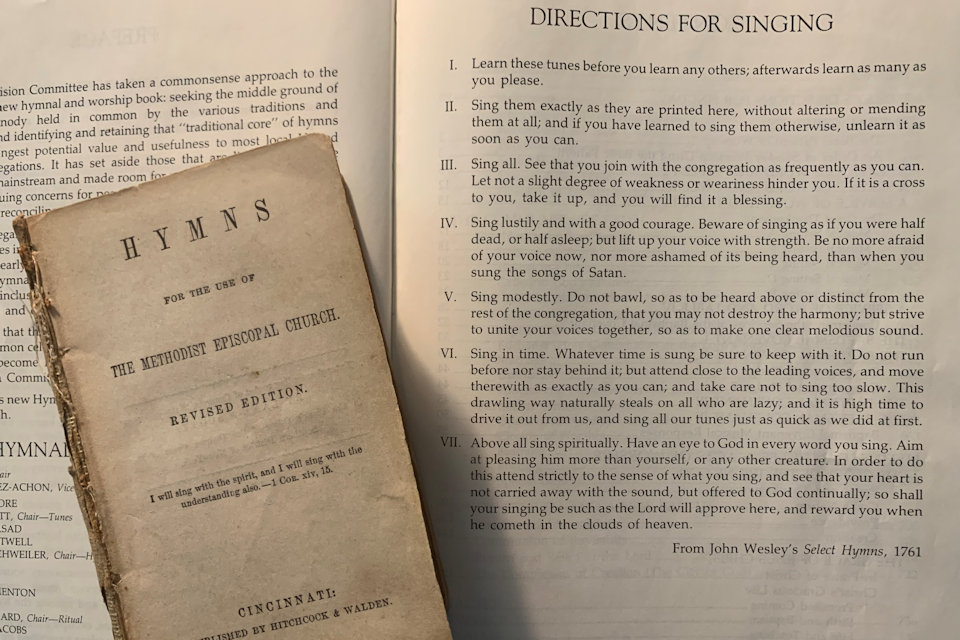To sing from a printed page is different, says the Rev. Jack Harnish. But while he prefers hymnals, he concludes the main thing is to “just sing” as Wesley instructed.
JACK HARNISH
Retired pastor, Michigan Conference
When I was a kid in the back row of the church balcony, we played a game called “under the sheets.” Add the phrase “under the sheets” to the title of a hymn and see if you can keep from snickering or laughing out loud in the middle of the sermon. That might not be the best use for a hymnal, but still, I like using a hymnal in worship. I understand the value of the creative use of the video screen and what it can add to worship. Often folks sing better with their heads up looking at a screen instead of staring down into a book singing to their belly buttons. And the video screen allows for the quick introduction of new and fresh songs without waiting for them to be published.
But for singing in worship, I still like using hymnals. Here’s why:
- They don’t break down like technology. How often are the words on the screen out of sync with the singing, or the wrong verse pops up at the wrong time, or the whole thing just freezes? It happens.
- They teach. They teach the musical notes as well as the words, and if you like singing parts, you can find the alto or bass line and join in. You can flip from page to page and discover a wealth of themes, ethnic traditions, and lessons in theology from the printed page. For example, the Presbyterian hymnal includes wonderful footnotes teaching the background of the hymns.
- They are there. The song doesn’t just vanish when you are done singing; it actually exists in a tangible way. So if you want to check out the hymns during the prelude or go back to reread the text, it’s there. And if a particular hymn speaks to you, the next time you open the hymnal, you can find it again … because it is there.
- They remind us of a tradition. Even outdated, stodgy hymns remind us that we are not just making this up on the spot. We are part of a long and rich tradition, joining our voices with generations who have sung God’s praise in ancient chants, Gospel songs, traditional hymns, and praise choruses in every generation.
- People actually sing. Sometimes contemporary worship feels like the congregation is an audience watching performers on stage or the screen rather than a worshiping body. When everyone has a hymnal, they feel more like participants than observers, even if they only hum along.
- They bind us together. Charles Wesley wrote over 6,000 hymns, and Methodists have been singing ever since. Every time I take a hymnal in my hand, I realize I am connecting with millions of Methodists around the world who have sung the songs of Wesley for 200 years. By contrast, in an article about the “unraveling” of the United Methodist Church, Ted Campbell points to the loss of a common hymnody as one of the early signs of a breakdown in our shared identity and life.
In John Wesley’s directions for singing, written in 1761, he said, “Sing all. Sing lustily and with good courage. Beware of singing as if you were half dead or half asleep. Do not bawl so as to be heard above the rest of the congregation but strive to unite your voices together. Sing in time and do not sing too slowly. Above all, sing spiritually. Have an eye to God in every word you sing. So shall your singing be such that the Lord will approve here and reward you when he cometh in the clouds of heaven.”
In the end, whether you sing from a video screen or a hymnal, just sing. Sing Lustily!! (but not “under the sheets.”)
~ For a brief history of Methodist hymnals, click here.
Last Updated on August 9, 2021

